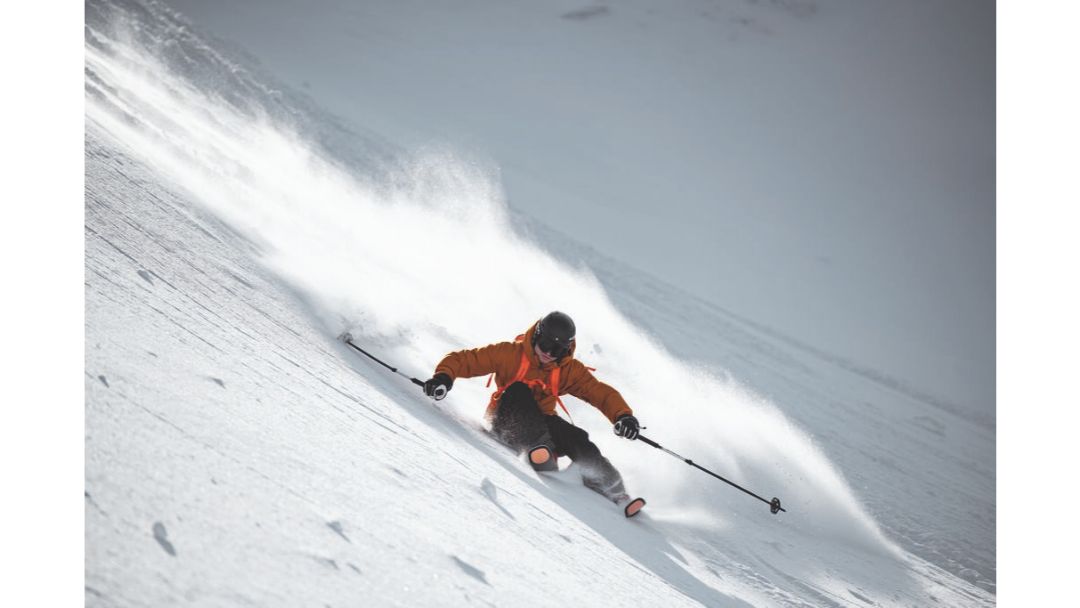If there is a single, do-it-all ski – particularly for western, big-mountain skiing – it no doubt lives in this category and probably has a waist width of 98 or 100mm. The reason is simple: up to this girth (95mm-100mm), these relatively wide skis don’t feel fat underfoot, so they ride the groom like a Frontside ski yet provide as much flotation in powder as possible without the width being a negative when the powder is gone. Manufacturers recognize the importance of this genre and therefore give it their very best effort, creating a rich array of options for the high performance skier. It’s remarkable that one category can contain so many different sensations and almost every ski is really, really good. Pay attention to this category, Dear Reader, for if you don’t already own an All-Mountain West ski, you will.
A mere 15 years ago we would have choked on these words, as skis 100mm underfoot then were niche models positioned as ideal for Alaskan heli-guides. The evolution that has taken place in the interim was triggered by the arrival of the Völkl Mantra in 2006, at first in the slightly more svelte waist width of 94mm. As with most Völkls made for men, then as now, there was no skimping on the quality of the construction: the Mantra was a rich, powerful ski right out of the chute. It performed like a soft GS race ski, but in a width that tracked through powder like the blitzkrieg, taking no prisoners. It quickly found a following due to Völkl’s already swollen ranks of faithful adherents, attracting the attention of every other major brand. (Nothing engenders a wave of imitators quite like creating a new niche with a high price tag.)
Driving the success of this genre is the eternal hope that part of the do-it-all equation will be a generous dose of fresh, deep powder. If you eliminate powder, and its evil twin, crud, from the mix of conditions in which you’ll use the ski, there’s no compelling reason to increase the ski’s flotation. But unless you live at the base of the ski resort, you can’t be sure what you’ll encounter on a big mountain; if a pocket of powder suddenly becomes available, wouldn’t you rather be on a ski that will embrace the situation? This is the mentality that has persuaded an increasingly large percentage of the market to gravitate to this genre.
Most, if not all, print-published ski tests would include under the All-Mountain West heading skis up to 110mm underfoot. Their inclusion is, in part, driven by the manufacturers, who want to increase the number of star products in this critical genre. But we believe bundling models on either side of the 100mm divide ignores a vital distinguishing trait: narrower skis put less strain on the skier in every condition but powder/crud. Sure, young bucks who log countless miles on western slopes use 108’s (and wider) as their everyday ski, God bless them. But we feel that the skis between 101 and 113mm underfoot should be treated as Big Mountain models that transparently sacrifice certain hard snow behaviors to achieve greater flotation – and presumed ease – in unbroken snow.
Within any genre there are skis that are curl-in-your-lap pussycats – our Finesse Favorites – and skis that are relentless fall-line predators, which we collect into our Power Favorites. The key virtue of the former is they improve ease and terrain access for less aggressive, lighter weight or lower skill skiers. The archetypical trait of the Power posse is they are utterly unflappable no matter where you go or how fast you go once you get there.
There isn’t a line of copy in any ski supplier’s brochure that would suggest their All-Mountain West ski possesses a single limitation, but this untempered enthusiasm conveniently overlooks a critical factor, namely the prospective skier’s skill level.
To be brief, anyone who would not classify himself or herself as advanced is looking behind the wrong door. To be less brief, if you don’t regularly tip the ski to a high edge angle, if you don’t ski with your feet extended away from your body, if you don’t have separation between the central angle of your upper body and the median that runs from your hips to your feet, if you don’t ski comfortably at speed, then you should look for a Frontside ski that will help you develop these skills.
The problem is that if a lower-skill skier acquires a model with a 100mm waist too early in his/her development, forward progress will freeze, slow down or even regress as the wider ski proves too cumbersome to tilt. The skier will probably feel better in powder and crud, but that’s about the extent of the benefits.

